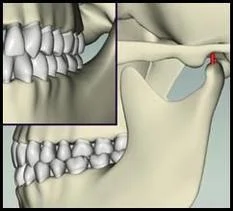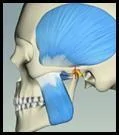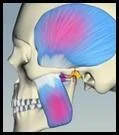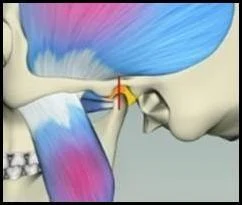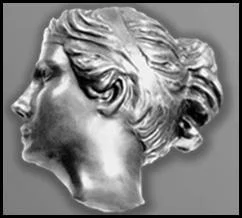Healing the TM Joints
We encourage patients to include a family member, friend, or other advocate in the treatment process. They will offer some objectivity, ask additional questions, provide additional information, and give you someone to talk to about your case. They also come to appreciate what you have faced.
TMJ patients often have chronic pain and are in distress. Most of the pain comes from muscles both large and small that stabilize and move the jaw. This does not feel like muscle pain, but seems fixed and constant.
TMJ treatment is an emerging field of medical care and the requirements are becoming clear: Extensive education in jaw joint physiology; in muscle pain of the head, and in jaw-based occlusion are all necessary.
Provide a credible entry point for patients and a resource for general and specialty practices; make well-founded referrals for specialty services and provide case management.
Diagnosis of the TMJ System:
TM Joints + Teeth + Muscles Evaluation of all three components is required when signs and symptoms are present to determine a sound medical diagnosis.
Step 1.
Joint analysis includes MRI and CT scans to be cross-referenced to gain a three-dimensional picture of the bone structures and the condition of the soft tissues.
The cartilage disk may be stuck or "adheased" to the bone or slipped forward or to one side or distended and degraded. All of the soft tissue in the joint capsule is evaluated.
Step 2.
Occlusion analysis begins in the mouth and continues on models of the teeth mounted on measured articulators. Contact patterns and interferences are evaluated. Poor occlusion stresses the joints and unstable joints degrade the bite.
Step 3.
Muscle analysis identifies which muscles generate pain. Charting muscle pain helps identify problems and conflicts between hard tissues. Some muscles may overdevelop and some may weaken or cramp.
Step 4.
We screen for other conditions that may cause symptoms, including neurological issues.
Treatment of the Chewing System:
Part 1. Stabilize the joints with an orthopedic splint. Adjusted over time to remove interference from the teeth, balance the pressure on the joints and allow the joints to find a healthy, adapted home position and a functional movement track.
Part 2. Adjust the occlusion to match the stabilized jaw joints. This naturally protects both the joints and the teeth, which allows normal relaxation in the muscles. Muscles both stabilize and power the movement of the jaw.
In some cases, surgery is needed to restore jaw-based occlusion. Surgery requires that the TM joints are stable and well adapted.
Part 3. Address chronic muscle problems. Sometimes muscles have been locked into a firing mode or issue pain continuously. Short-term trigger point injections may block pain and stop chronic, painful contractions. If the muscles are responsive, Botox is an option to give specific muscle groups a few months to recover. This often restores normal function. Redundancy in muscle groups prevents loss of function.
Effective treatment leads to stabilized TM joints which provide the basis for stable occlusion.
Muscle pain will usually resolve or can be improved slowly over time.
TM joints are resilient even when severely degraded. Treatment is predictable and the prognosis for achieving harmony and rehabilitation is a realistic goal.


